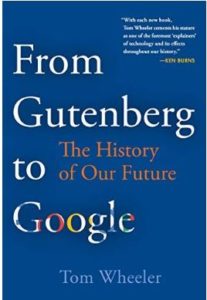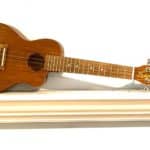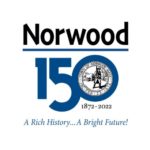
5
MarThe Printer’s Daughter
 This past week, I was yanking some memento out of the bottom of a long-forgotten box, when a small metal plate slipped out of a booklet. It was a three by one-and-one-half inch engraved plate – a metal negative of a photo of my mother. I remembered the photograph well. It accompanied an article in a printed newspaper or newsletter published over a half-century ago.
This past week, I was yanking some memento out of the bottom of a long-forgotten box, when a small metal plate slipped out of a booklet. It was a three by one-and-one-half inch engraved plate – a metal negative of a photo of my mother. I remembered the photograph well. It accompanied an article in a printed newspaper or newsletter published over a half-century ago.
In the early 1960s, Mrs. Carolyn Fitzgerald had been elected to the office of President of the Women’s Auxiliary to the Typographical Union in Oakland, California. I flipped the metal right to left and revealed an image of a beautiful, perfectly coiffed young mother in her thirties. Flipping it again, of the metal plate exposed the negative image of the same photo.
That day, I was reminded of the newspaper printing business that defined my childhood. In 1959, my soon-to-be stepfather left his job as a typesetter at the Worcester Telegram and Evening Gazette. He and his brother, Bill Fitzgerald, had heard there were plenty of printing opportunities, particularly typesetting, in the newspaper industry in the San Francisco Bay Area. Like pioneers, they were the advance team, moving to the west coast, getting decent-paying union jobs, and setting up apartments to await their families. My mother, my brother, and I made the transatlantic journey from Boston to San Francisco on TWA and settled into that unique college town called Berkeley.
The Berkeley Daily Gazette was published in a low, industrial building in the heart of the city’s downtown. From our home, it was only a bit over a mile walk along tree-lined city streets. I remember my mother and I often visited as a child with my younger siblings in a stroller. Few women worked in the typesetting or printing press areas, as I recall. These were the fifties, of course, when wives and mothers tended children and homes. However, wives did drop by with children in tow.
The Gazette, of course, ran around the clock. Over the years, I remember my stepfather taking the later 3 pm to 11 pm shift to make sure the newspaper was ready for printing in the morning for delivery later that day. What I do remember is that he left the house every day in our one and only “automobile” to drive the short distance to work. He dressed in a suit jacket and pants, white shirt and tie, and spotlessly shined shoes. He changed into his perfectly-pressed work clothes as soon as he got to work. His New England penchant for formality never wavered.
I was fascinated by my stepfather’s work, and it might explain my early interest in books, fonts, and writing. The tiny tweezer-like instrument he held to pick up and place the letters, spaces or punctuation mark, placing them in metal lines. I imagined him lining up little letters to form words and columns. I’ve read since that the centuries-old Letterpress printing of manually placing each space and letter was abandoned to hot metal typesetting long before my stepfather worked at the Berkeley Gazette.
The Linotype was invented in the 1880s. Lines of type were composed using a method of entering text (sometimes on punched paper rolls), and the machine forms letters in a line cast into metal called a slug. This miracle of typesetting was never explained to me. In retrospect, I realize that my stepfather and his team of typesetters must have been placing these lines of type, and adding headlines into the frames that became pages of the newspaper. In the International Typographic Journal, Volume 64 (found on Google Books), the newest linotype machine was installed in the Berkeley Gazette in 1924.
Meanwhile, in other areas of the large newspaper composing room of the 20s to 60s, another specialist, a lithographer, was creating metal plates of negatives of photographs. The plates were then cast in rubber and set inside the pages that were laid out on a large work counter. The sheets were finished with captions, metal-lettered headlines, and linotype of thousands of tiny letters making up the news. The smells of ink and metal, of leather aprons and machinery and men, filled the air. A half-century later, I remember the noise of the presses in the background as if it were yesterday.
The newspaper business changed drastically in the later 1960s and 1970s. New technologies forced typesetters and lithographers to learn new trades that relied on other skills. Phototypesetting replaced the hot metal with cold type. By the early 1970s, my stepfather and his coworkers retired earlier than they expected, forced from work by technological advancement.
Ironically, it was my homemaker mother, her children growing up, who took phototypesetting classes and worked for a few more years in the industry. A decade later, these skills were replaced by computer drives, and her job, too, disappeared in the digital era. The rest, of course, is history as newspapers closed and merged. After nearly a century of publishing a daily paper, the Berkeley Gazette printed its last newspaper in 1984.
Every schoolchild learns that Johannes Gutenberg invented moveable type and the printing press in the fifteenth Century. His invention undeniably changed society. For the first time, people were mass consumers of information. Five centuries later, in the 20th Century, we sent men to the moon, learned to kill with mightier weapons, pushed medical milestones, and invented digital technology. Yet, from 1439 until 1960, the printing industry relied mainly on the manual labor of the printing trades to publish daily newspapers.
Last year, the Brookings Institution Press published From Gutenberg to Google: The History of Our Future by Tom Wheeler (February 2019). It is a history of that 500 years between the invention of the printing press and the revolution of Google. It is also a story of technology that is moving at lightning speed in the 21st Century. Wheeler’s book describes the ways that communication changed through the inventions of movable type to the telegraph, the telephone, the personal computer, the Internet, and beyond.
We’re all too aware of the changes in the publishing business in the last few decades as it has adapted to a digital and online environment. However, the changes of the mid-20th Century were significant in the news industry to the workers behind the scenes, those creating the pages for the printing presses that worked 24-hours a day. We owe them a debt, along with journalists, editors, printing press operators, and newsboys with making information abundantly available through them – in what we all relied on for the news.
Charlotte Canelli is the Director of the Morrill Memorial Library in Norwood, MA. Look for her article in the March 5, 2020 issue of the Transcript and Bulletin.








